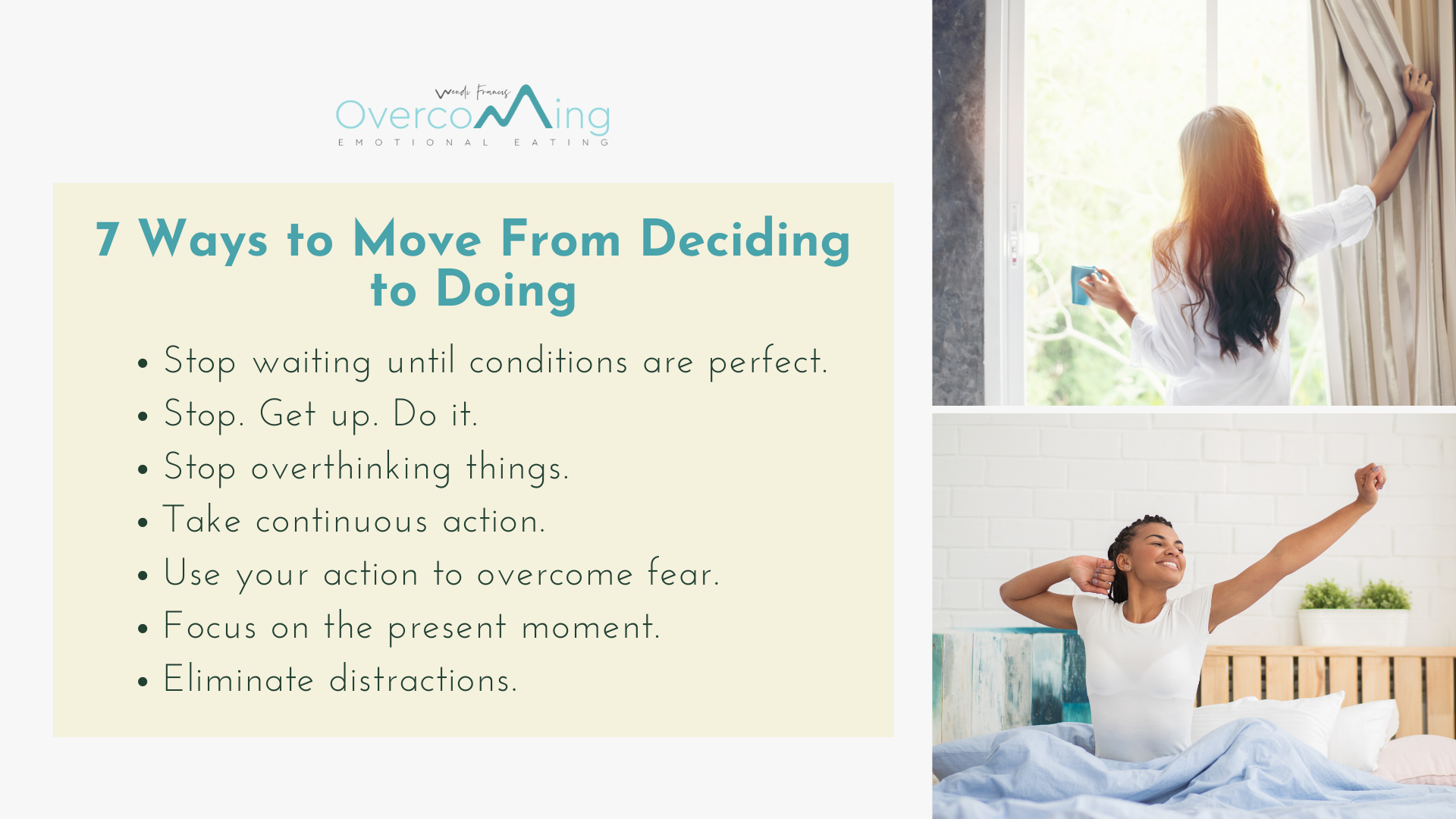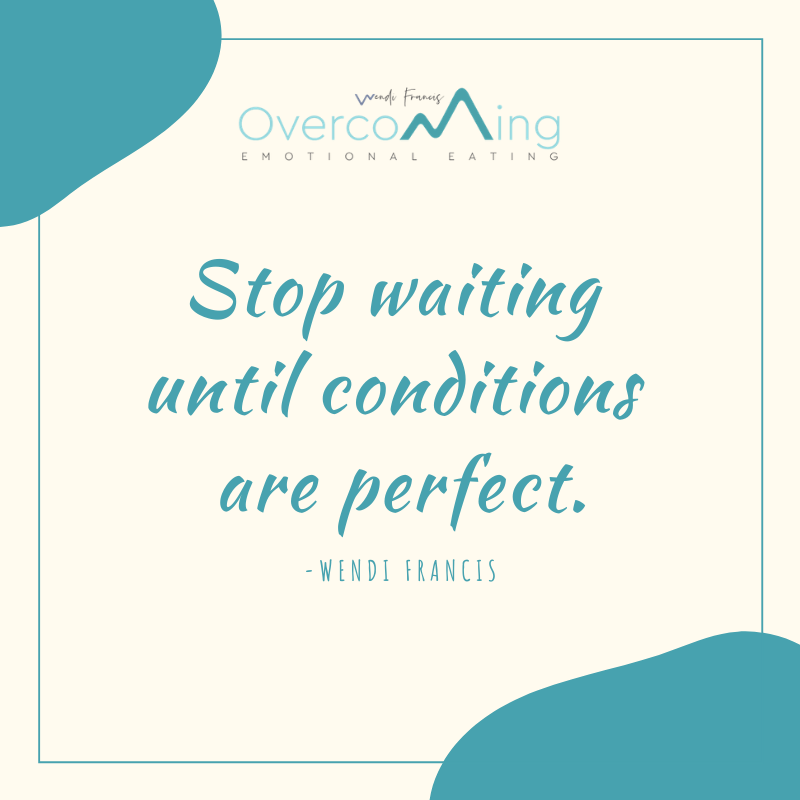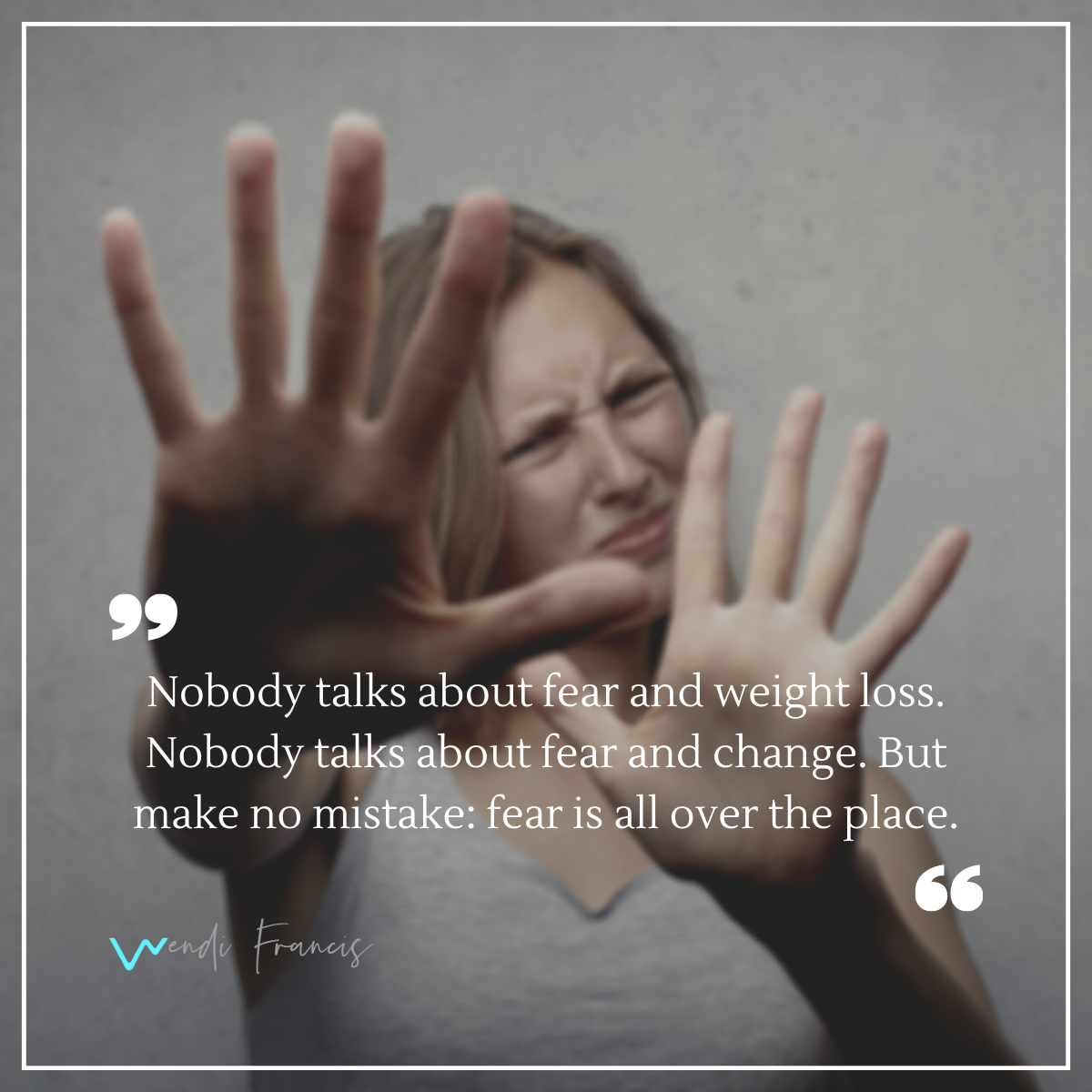“I can. I will. WATCH ME.”
– Oprah Winfrey
We all think that making change is easy. But it’s a lot more complex than simply saying, “I will change now and stop overeating.”
You must take specific steps to make change happen. And the biggest step is this: moving into action.
Moving into Action
We can all make plans, preparations, et cetera. We can all make SMART goals. I’ve seen this done in many ways. But what interests me so much is the psychology of moving into action. Because everyone can make plans, but not all of us can take action.
Let me offer you a little riddle to illustrate the point:
Five frogs are sitting on a log.
Four of them decided to jump off.
So, how many frogs are left?
What’s your answer?
The correct answer is, actually, still five.
Why?
Because deciding to do something is different from actually doing something.
I can, I will — WATCH ME
Making up our minds to do something is just the first of many steps into making change. As Oprah Winfrey said during her 2020 vision seminar:
I can.
I will.
Watch me.
And this is how we start making change by moving into action.
The 7 Tips for Moving into Action

I’ve watched people stay in the I can for so long, and they never move to Watch me.
So, I list here the seven important tips you must follow in order to start moving into action.
1. Stop Waiting Until Conditions are Perfect

Nothing is ever perfect. If you want everything to be perfect before you do something, you will wait forever.
There’s always going to be something that’s not right, or could be better, or could be worse.
The best time to start what you need to do — whether it’s changing your relationship with food, overcoming emotional eating, or developing healthier habits — is NOW.
2. Stop. Get Up. Do It.
Now is the best time for you to change your relationship with food; to change what you eat and what you do.
Now — this moment, today — is the time to get up and do it.
The most successful doctors I’ve worked with are ones that have just jumped in and done it. And when I started my private practice, I just found an office space, and I did it.
I had passion; I had a heart; I had some training — and I just jumped in.
There is no better time than the present to do it.
3. Stop Overthinking Things

There’s a time for thinking and analyzing — this much is true.
But when we overthink things, we start to get the “paralysis of analysis.” We’ve heard many people laugh at this, but it’s true.
I have clients on both ends of the spectrum.
My clients with anorexia as well as with compulsive or emotional overeating — they both become paralyzed when they’ve analyzed they’ve been beaten.
What could they do? Where could they go? How much exercise do they need?
And when we fall into this trap of overthinking, we stop becoming a doer.
4. Take Continuous Action
But once you get started, keep your momentum going by doing something every day that’s related to what you want to change.
Even if it’s small.
I have met many clients who have come up with these GREAT, BIG ideas.
I can remember one of them from way, way back. She came in with severe anorexia. Her doctor said he’d put her in the hospital if she didn’t gain three pounds in the next week.
She was so scared, and she said, “I’m going to eat 3,400 calories this week.”
And I told her that that was a lot from where she was. I told her to make some smaller goals. We created a 3,400-calorie plan. We talked about small action steps she could do every day in case the plan didn’t work out.
Sure enough, she called me after two days saying she was glad we made the secondary plan because she could really only make those one or two small steps we’ve highlighted.
That started her momentum.
Just like a little snowball coming down the hill, our little but continuous actions can turn into a great avalanche.
5. Use Your Actions to Overcome Fear

Nobody talks about fear and weight loss.
Nobody talks about fear and change.
But make no mistake: fear is all over the place.
Here’s what I learned about fear: If you keep fear in the corner of your office or your room, it grows bigger. And the best way to shrink fear is to turn around and face it.
When you do that, you can understand it and move through it. And moving into action — taking action NOW — can cure fear.
6. Focus on the Present Moment
An old Chinese proverb goes:
The best time to plant a tree was 20 years ago. The second best time is right now.
It’s true: if we planted those seeds — the seeds of changing our relationship with food — 20 years ago, we would have started losing weight 20 years ago.
But if we still don’t plant the seeds now, we’ll still be standing in the same place 20 years from now without a tree.
So, focus on what you can at the present moment.
Not on what you did back then.
Not on what you should have done.
Most people remember the past and hold on only to the bad things. When we do that, we can’t let go of the past and we can’t focus on the present.
When you want to move into action, you’ll need the energy — physical, mental, emotional, and spiritual. You can’t get that energy if you’re stuck in the past.
7. Eliminate Distractions
Finally, in order to move into action, we should eliminate all distractions. When we do this, we’ll have so much more energy to give our action.
As Martin Luther King Jr. said, you don’t have to see the whole staircase.
Just take the first step.
That’s the most imperative thing to do to make a change and move into action.

Now’s the Time to Act
The right time to make a change and move into action is NOW. No other “perfect timing” exists, except the present moment. So remember these tips when you start your journey toward changing your relationship with food and overcoming emotional eating.


